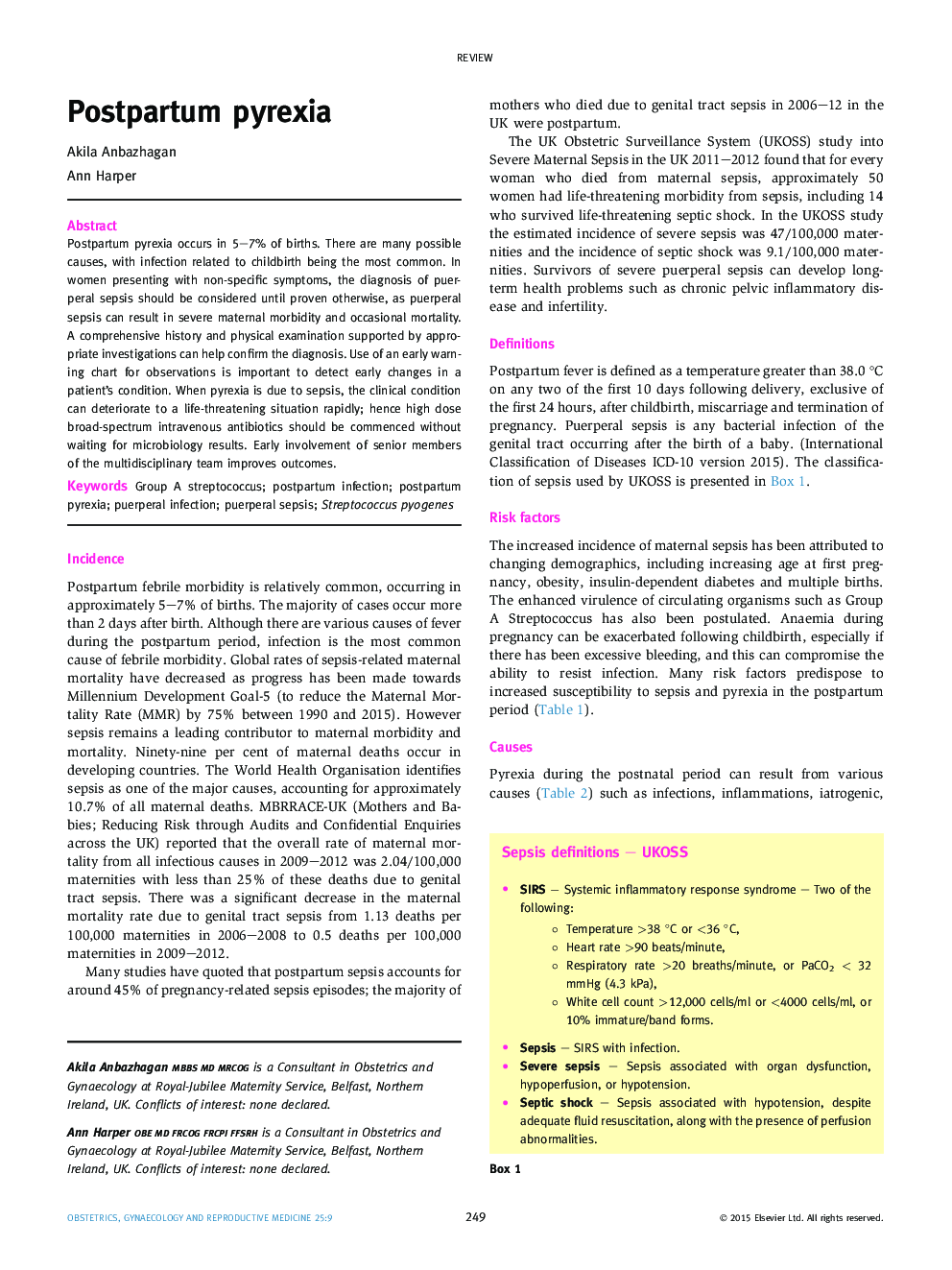| کد مقاله | کد نشریه | سال انتشار | مقاله انگلیسی | نسخه تمام متن |
|---|---|---|---|---|
| 3966584 | 1256171 | 2015 | 6 صفحه PDF | دانلود رایگان |
Postpartum pyrexia occurs in 5–7% of births. There are many possible causes, with infection related to childbirth being the most common. In women presenting with non-specific symptoms, the diagnosis of puerperal sepsis should be considered until proven otherwise, as puerperal sepsis can result in severe maternal morbidity and occasional mortality. A comprehensive history and physical examination supported by appropriate investigations can help confirm the diagnosis. Use of an early warning chart for observations is important to detect early changes in a patient's condition. When pyrexia is due to sepsis, the clinical condition can deteriorate to a life-threatening situation rapidly; hence high dose broad-spectrum intravenous antibiotics should be commenced without waiting for microbiology results. Early involvement of senior members of the multidisciplinary team improves outcomes.
Journal: Obstetrics, Gynaecology & Reproductive Medicine - Volume 25, Issue 9, September 2015, Pages 249–254
